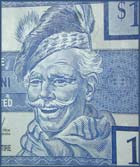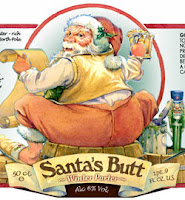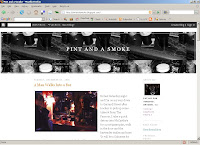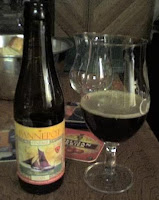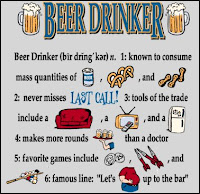 This past weekend, while taking a break from working on the Really Cool Project that my wife and I will soon be launching, I spent an hour or two catching up on a week’s worth of blog reading, and I was somewhat amused by all of the attention that was being given to a fluff piece that ran in the Pittsburgh Tribune-Review last Wednesday. Entitled “Beer snobs forget the true meaning of beer“, the article sees columnist Mike Seate lamenting the influx of bars catering to people who actually want some choice and flavour when it comes to their beer.
This past weekend, while taking a break from working on the Really Cool Project that my wife and I will soon be launching, I spent an hour or two catching up on a week’s worth of blog reading, and I was somewhat amused by all of the attention that was being given to a fluff piece that ran in the Pittsburgh Tribune-Review last Wednesday. Entitled “Beer snobs forget the true meaning of beer“, the article sees columnist Mike Seate lamenting the influx of bars catering to people who actually want some choice and flavour when it comes to their beer.
If you read the piece (go ahead, it’s short), you’ll see that Mr. Seate has two big problems with these sort of places:
- The beer is too expensive; and
- The people who choose to drink the type of beer served in these places don’t know what beer is really supposed to be about.
His argument is summed up by the penultimate paragraph:
Is it just me, or has somebody forgotten that beer is supposed to be a workingman’s drink, as free from pretensions and airs as a kielbasa smothered in sauerkraut?
As you might expect, this caused quite a flurry of commentary on the beer boards and blogs that us hoity-toity non-workingmen like to frequent. Lengthy threads sprang up on RateBeer and Beer Advocate, and most notable (and opinionated) beer-bloggers chimed in with their thoughts, including Alan at A Good Beer Blog, Stan at Appellation Beer, and Jay at Brookston Beer Bulletin.
Perhaps the best counter-argument came from Stephen Beaumont, who asks “Who defines what a workingman should drink?“, and sums things up nicely in these two paragraphs:
What does bother me […] is the idea that North American “workingmen,†as popularly defined by people such as Mr. Seate, are expected, no, required to make do with ordinary, often boring food and drink, as if the past two or three decades of gastronomic evolution have never occurred. If your collar is blue, the theory goes, you are expected to make do with a pint of pale, ice-cold lager and an order of previously frozen chicken wings and fries, and be happy for the privilege.
Now, contrast this with what I see in continental Europe, where local people of all stripes and economic classes, and both genders, tend to eat local food and drink local wines and beers. In areas like rural Wallonia in Belgium, the Provençal countryside and the hills of Tuscany, one needn’t worry about being derided for preferring the wares of the small winery or brewery down the street, or noshing on some artisanally-produced cheese or cured meat. Quite the opposite, in fact; a person might be thought too big for their boots if they went with the national, mass marketed brand.
In the aftermath of all this activity, Mr. Seate made a couple of posts to his own blog where he quoted some of the irate emails that he received from beer aficionados who took offence to his article. As expected, he doesn’t take them very seriously, expressing shock that there people out here who “spend their off hours visiting Web forums where they discuss beer, worship beer, analyze brewing techniques and generally turn something as simple and refreshing as beer into a Star Trek convention nerd-fest”.
Hey! I resemble that remark!
But am I upset or angry by the column? No, not really. I’m well aware that my habit of sniffing, swishing and scribbling while enjoying my beer makes me one of those “weird beer enthusiasts” that Mr. Seate refers to in one of his blog posts. I’ve always had mildly obsessive tendencies and a habit of collecting and cataloguing things, and I’ve moved from being a comic geek to a music geek to a beer geek. Most people don’t get it, and I’m fine with that.
It’s unfortunate, though, that so many people are ignorant of – or indifferent towards – the fact that while 90% of the beer produced in the world today may be bland, industrially-produced pale lagers, the remaining 10% consists of brews of a variety and complexity that rival the best wines and spirits. Or that so many people are content to treat beer as nothing more than a commercial product, like “cornflakes or, say, Hostess cupcakes”, to use Mr. Seate’s words. But if they’re happy too look at beer as just another item on their grocery list, and don’t have the time or interest in exploring the beer world beyond Blue, Bud or Boddingtons, then who am I to argue?
Anyway – just to add a little twist of irony to this whole episode, I thought I would mention that I spent a night in Pittsburgh about 15 years ago, a time when, according to Mr. Seate:
[…] few local bars served anything more esoteric than, say, Old Frothingslosh, and the concept of drinking a Guinness stout from a tap just like Europeans do was something of a beer-lover’s revelation.
Now, while I tended to drink local microbrews at the time, I was far from being the raving beer-rating fanatic that I am today, so I wasn’t on doing any beer hunting. I was just on a the road for a few days to see a couple of musician friends playing shows in some Midwestern towns, and their show in Pittsburgh happened to be at a place called the Bloomfield Bridge Tavern. It was a comfortable college-friendly place with a banner out front proclaiming that they served the “Best Perogies in Pittsburgh”.
And it also had dozens of different beers from all over the world. So many of them that they ran out of room behind the bar and put the overflow on the customer’s side of the bar, in fridges with lights that flashed when they were opened so the staff could make sure no-one absconded with the goods without paying. I don’t remember now what I drank that night – maybe something from Russia? – but it was definitely something I’d never had before. And I liked it.
Isn’t it funny that one of the milestones in my journey towards full-fledged beer geekdom happened right in Mr. Seate’s backyard?
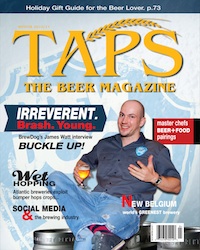 It’s been a while since I last mentioned it here, but I’m still doing a some writing for TAPS Magazine, the quarterly publication that looks at the beer and brewing industry from a Canadian perspective – although since changing the subtitle from “Canada’s Beer Magazine” to “The Beer Magazine” a few issues ago, the scope has expanded to include more content from beyond our borders. It’s a magazine that keeps getting better and better, and even if wasn’t writing for it, I’d be reading every issue from cover to cover.
It’s been a while since I last mentioned it here, but I’m still doing a some writing for TAPS Magazine, the quarterly publication that looks at the beer and brewing industry from a Canadian perspective – although since changing the subtitle from “Canada’s Beer Magazine” to “The Beer Magazine” a few issues ago, the scope has expanded to include more content from beyond our borders. It’s a magazine that keeps getting better and better, and even if wasn’t writing for it, I’d be reading every issue from cover to cover.
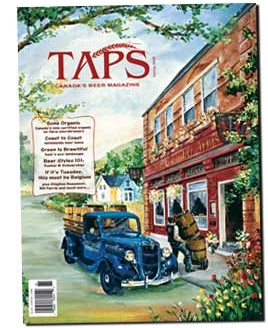 As I was finishing up my contributions to the upcoming Summer issue of
As I was finishing up my contributions to the upcoming Summer issue of 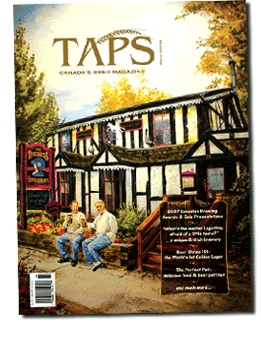 During my decade or so as a music writer and reviewer, I had my work published in a number of magazines around the world. I even spent a year or so as the editor of an electronic music section in Chart, a national music magazine here in Canada. Even so, I couldn’t help but feel a little giddy when I received some copies of the first issue of the newly relaunched
During my decade or so as a music writer and reviewer, I had my work published in a number of magazines around the world. I even spent a year or so as the editor of an electronic music section in Chart, a national music magazine here in Canada. Even so, I couldn’t help but feel a little giddy when I received some copies of the first issue of the newly relaunched 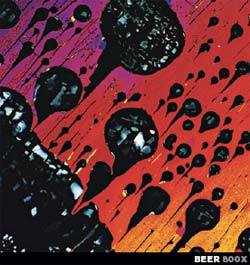 For their November, 2007 issue,
For their November, 2007 issue, 
